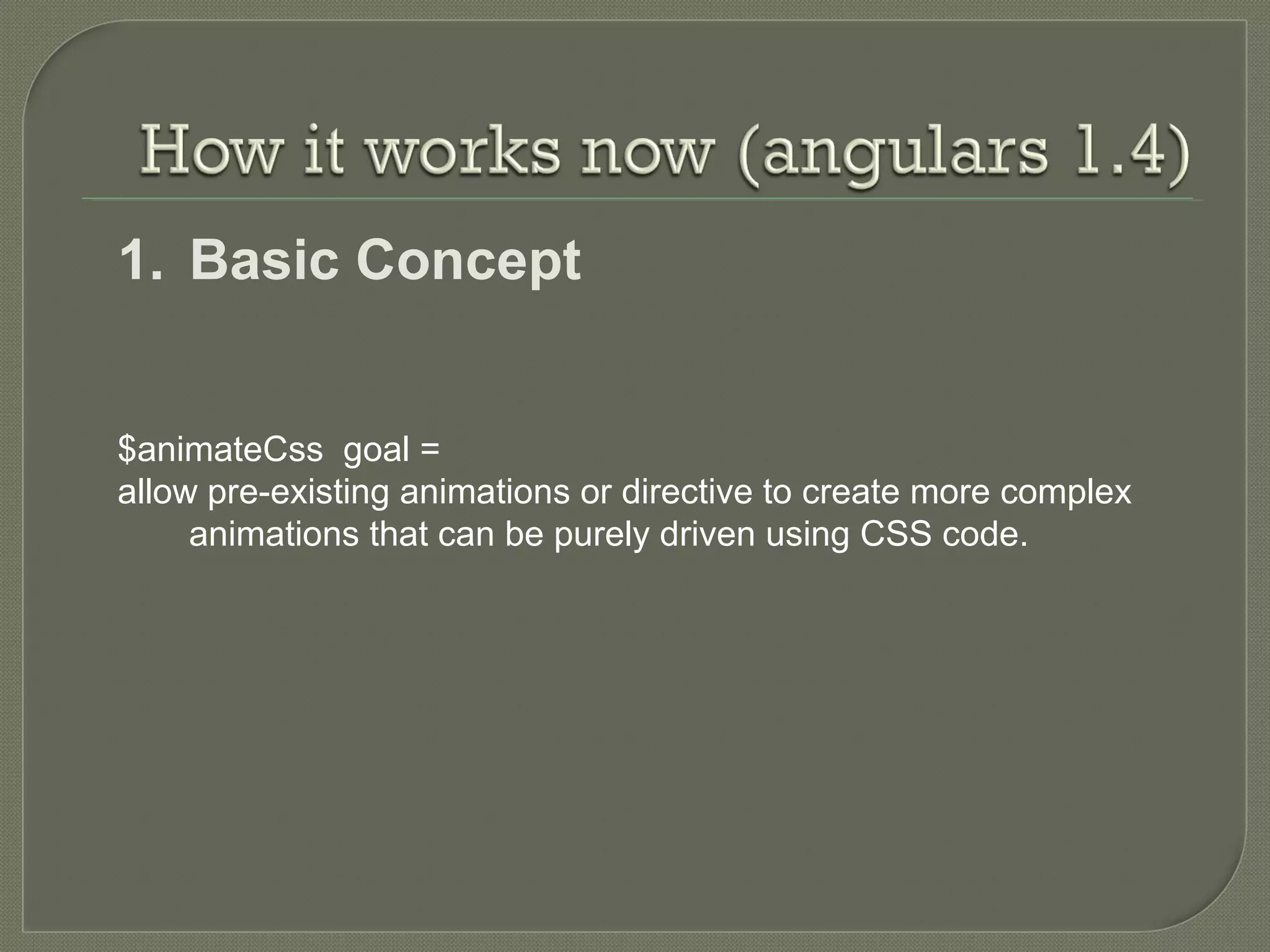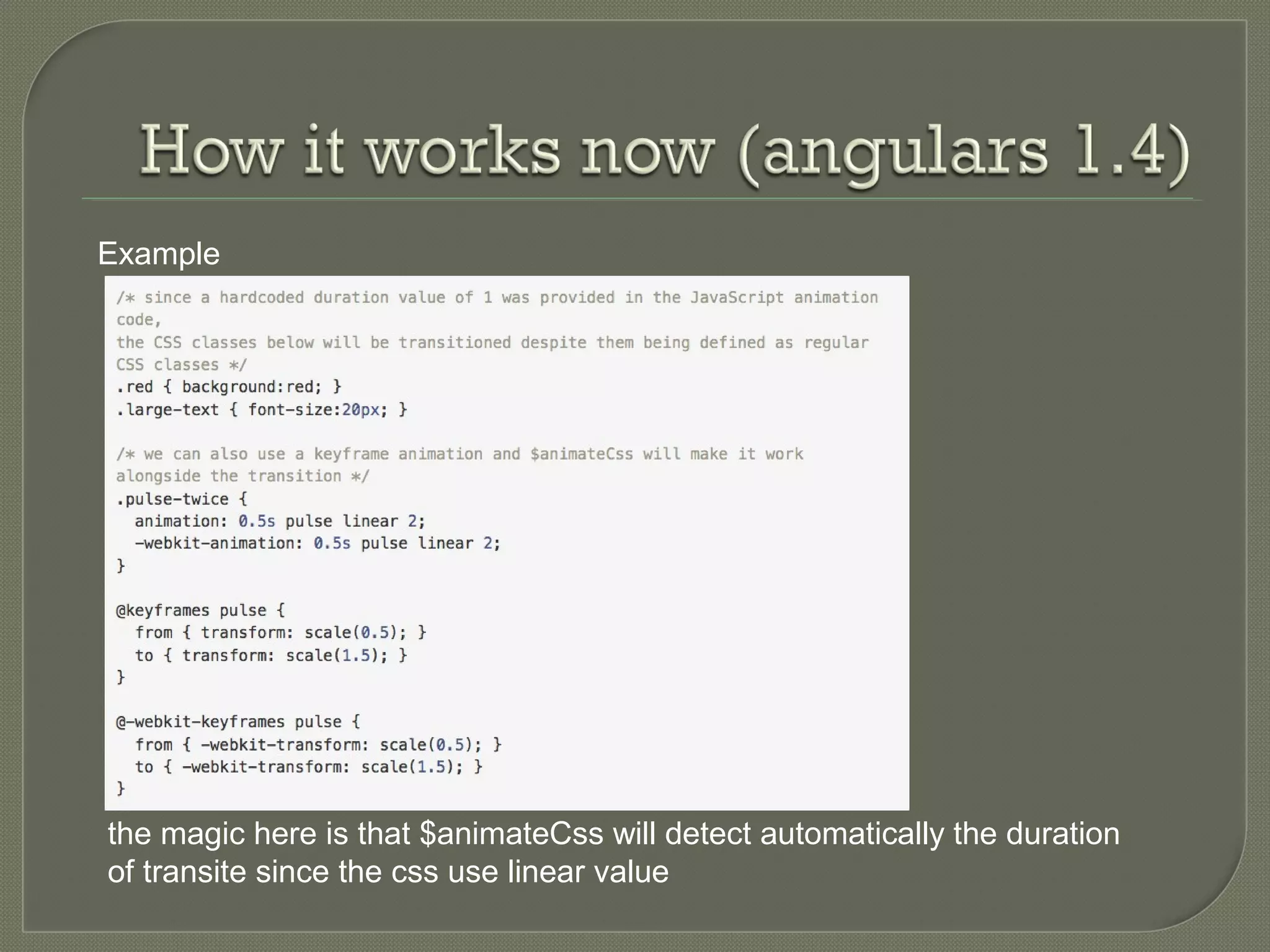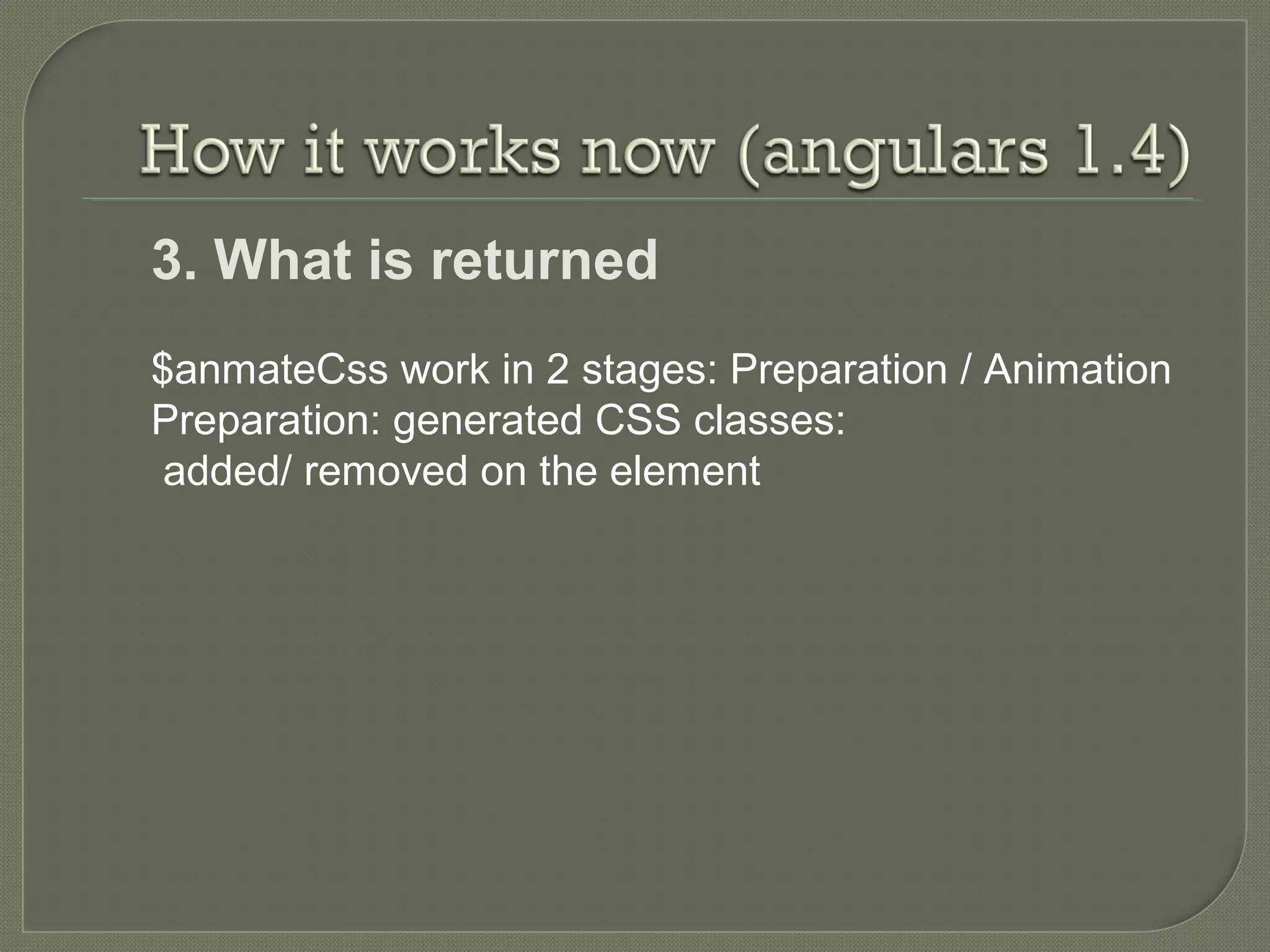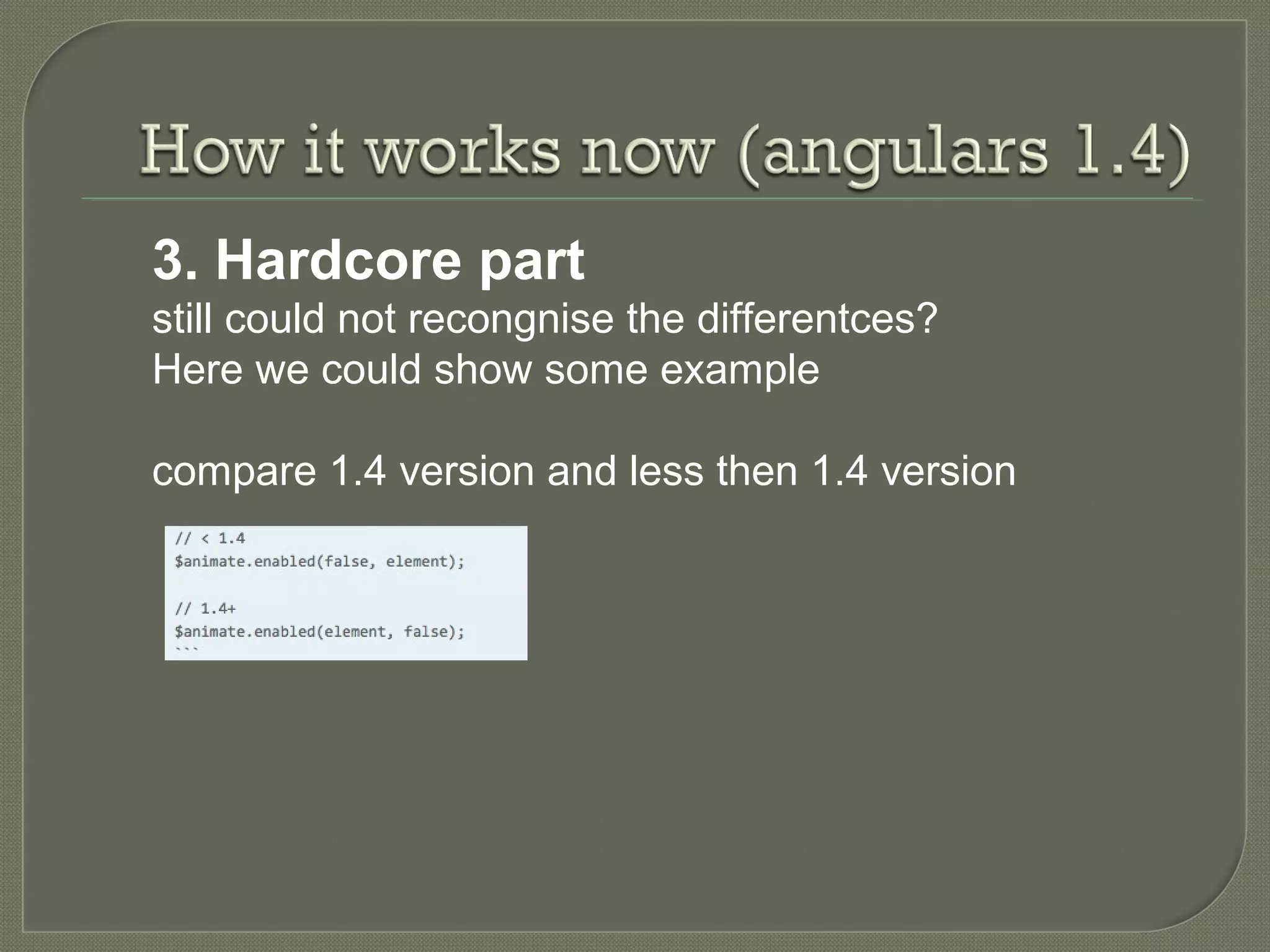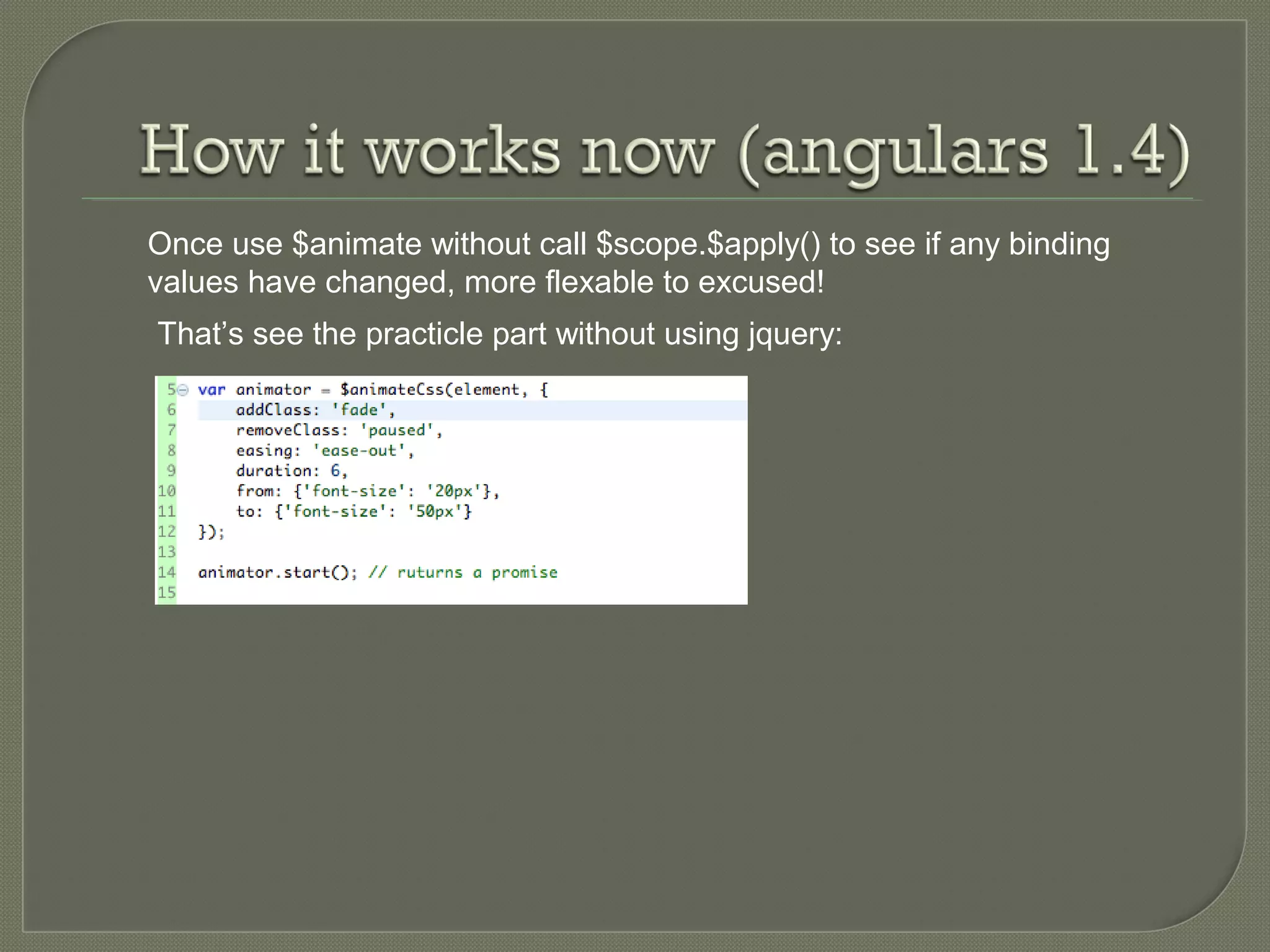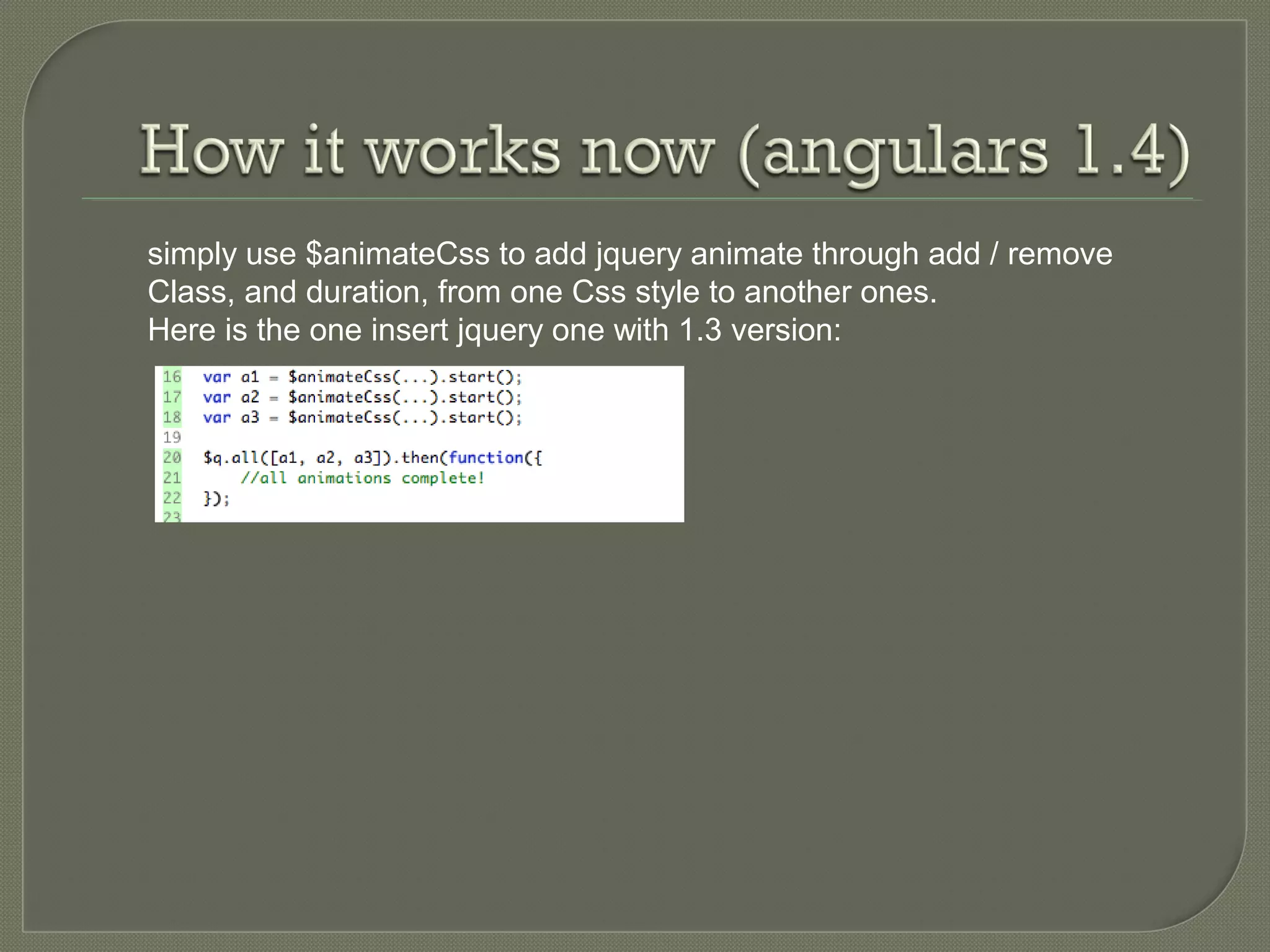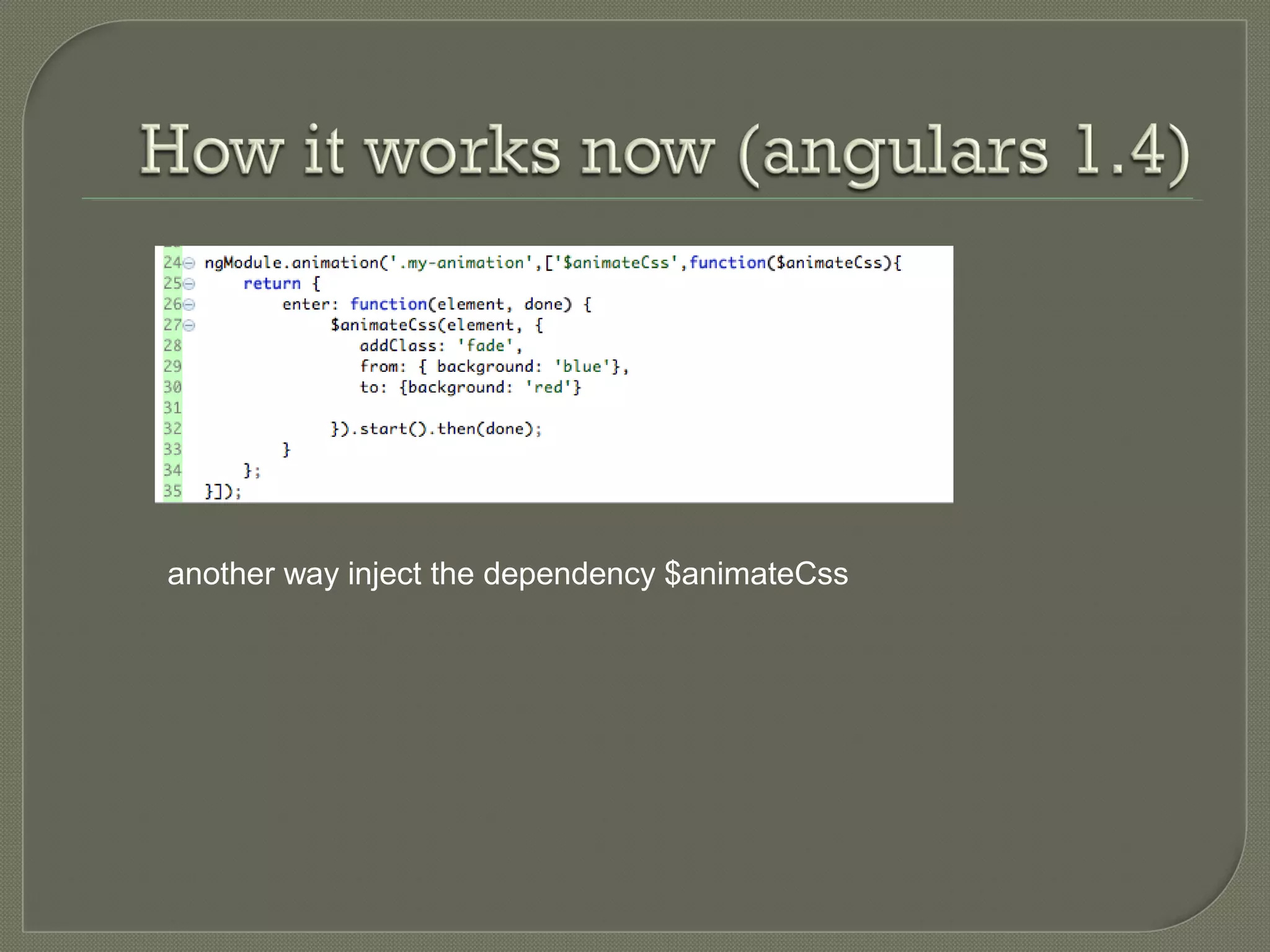This document presents an overview of AngularJS, particularly focusing on its animation features in version 1.4 compared to 1.3. It discusses two-way data binding, the usage of CSS animations with Angular's $animate service, and practical implementation examples. Additionally, it highlights how to create animations through directives and the implications of using the $animate.css service for managing animations effectively.
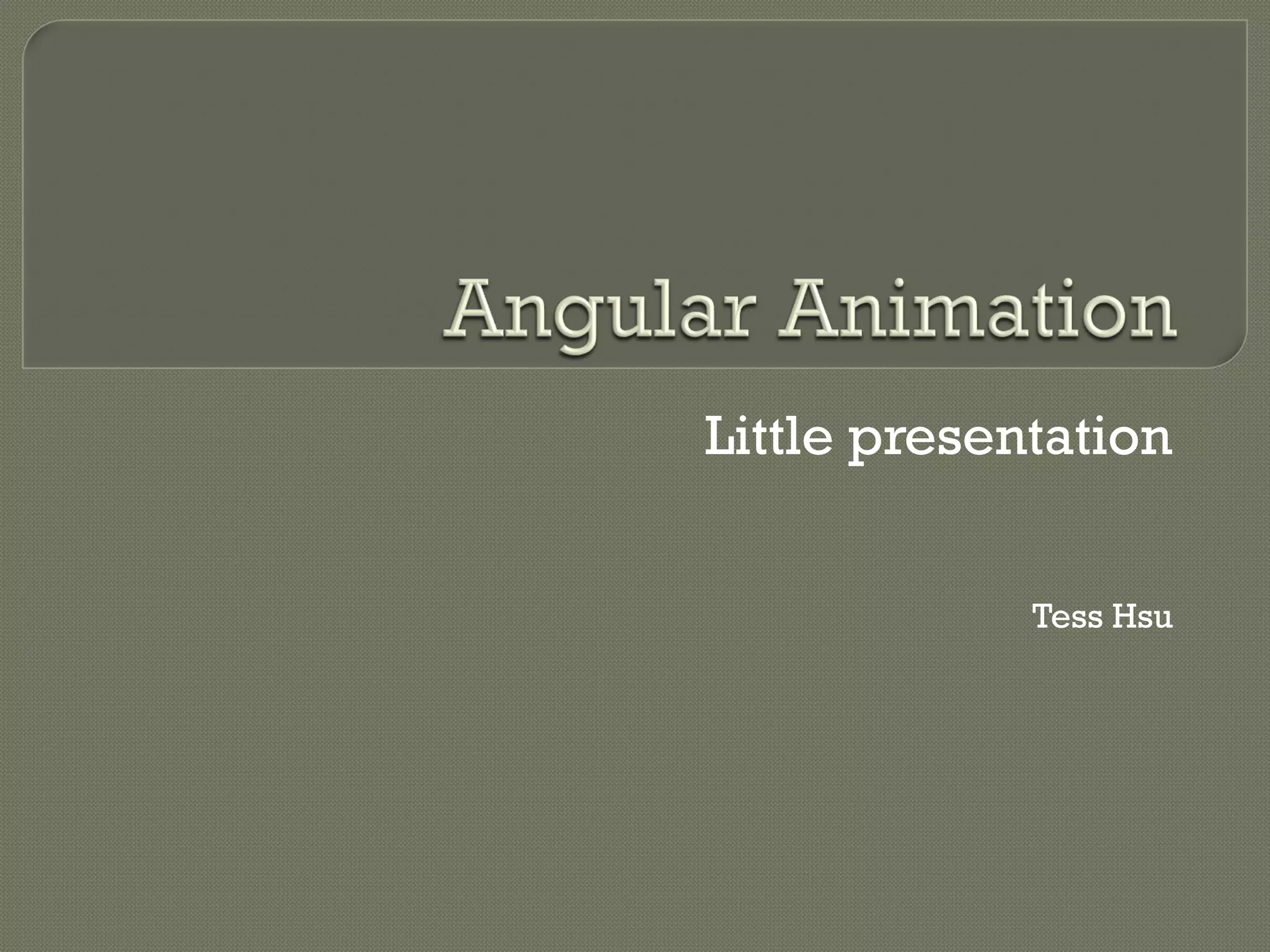
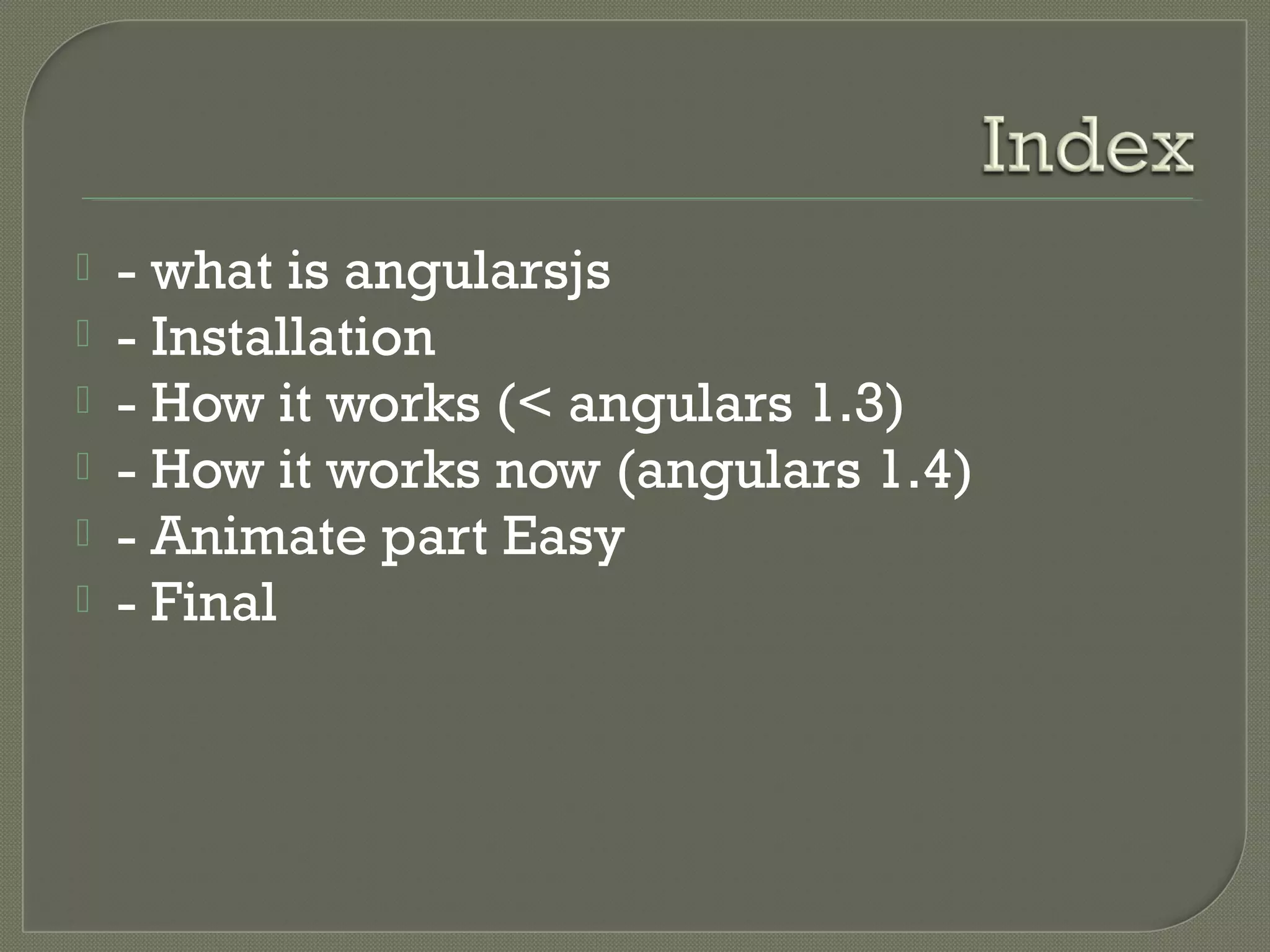

![ $ bower install --save angular-animate <script src="js/vendor/angular.js"></script> <script src="js/vendor/angular-animate.js"> </script> angular.module('myApp', ['ngAnimate']);](https://image.slidesharecdn.com/angularanimate-150603003943-lva1-app6891/75/Angular-animate-4-2048.jpg)

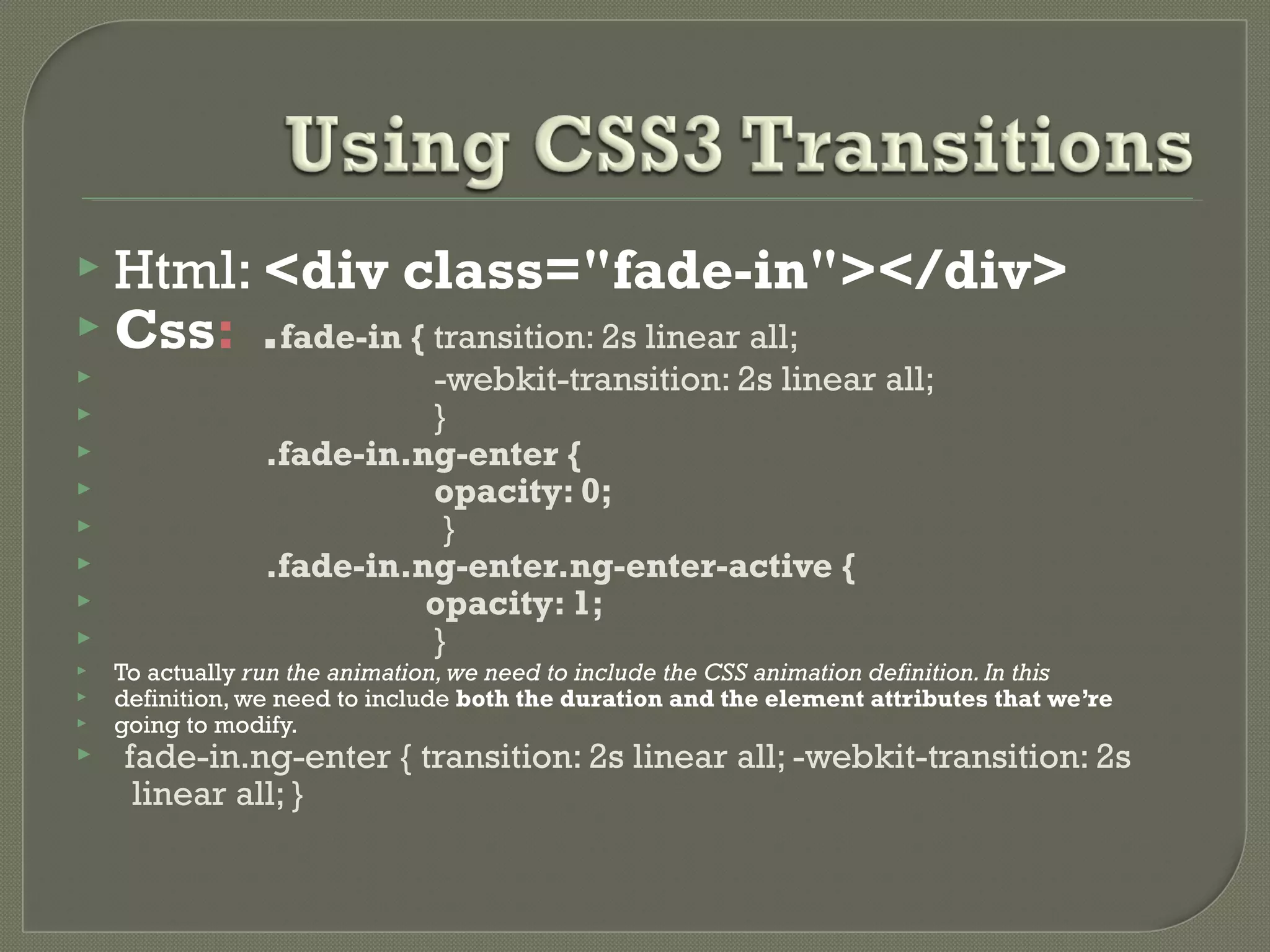

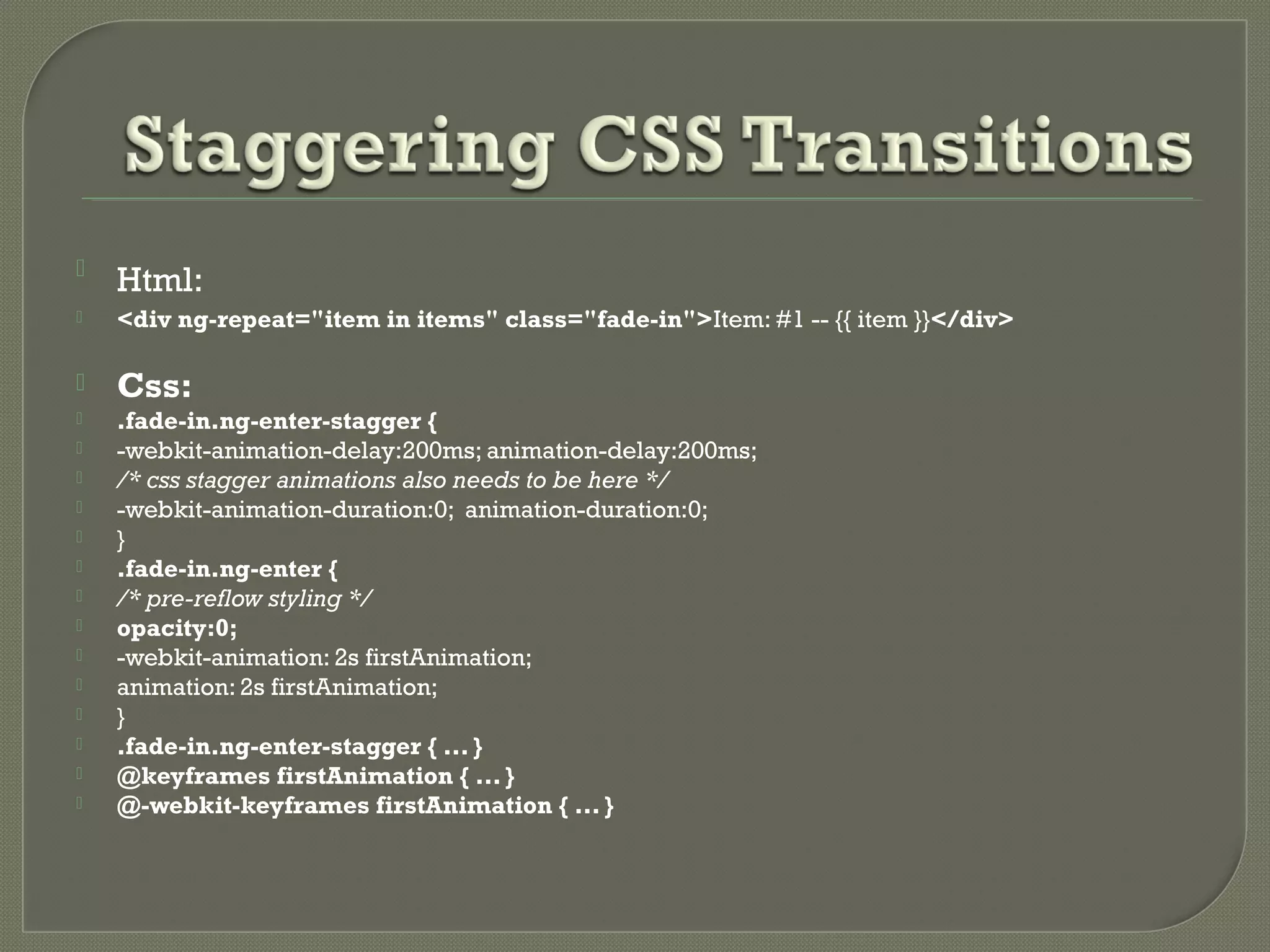
![ angular.module('myApp', ['ngAnimate']).animation('.fade-in', function() { return { enter: function(element, done) { // Run animation // call done when the animation is complete return function(cancelled) { // close or cancellation callback } } });](https://image.slidesharecdn.com/angularanimate-150603003943-lva1-app6891/75/Angular-animate-9-2048.jpg)
![HTML: <div ng-controller="HomeController"> <ul> <li class="fade-in" ng-repeat="r in roommates”>{{ r }}</li> </ul> </div> HomeController: angular.module('myApp', ['ngAnimate']).controller('HomeController', function($scope) { $scope.roommates = ['Ari', 'Q', 'Sean', 'Anand’]; setTimeout(function() { $scope.roommates.push('Ginger'); $scope.$apply(); // Trigger a digest setTimeout(function() { $scope.roommates.shift(); $scope.$apply(); // Trigger digest }, 2000); }, 1000); });](https://image.slidesharecdn.com/angularanimate-150603003943-lva1-app6891/75/Angular-animate-10-2048.jpg)


